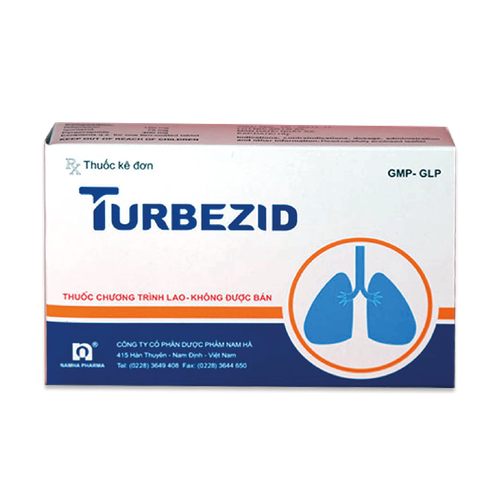This is an automatically translated article.
Posted by Pharmacist Hoang Nguyen Kim Thoa - Vinmec Times City International General Hospital
In the struggle with tuberculosis over the centuries, one of the difficulties is the limited number of anti-tuberculosis drugs while the effects occur quite often. Although common, not all patients experience these side effects. The incidence of common side effects can range from >1% to >10%.
1. Introduction to TB drugs and common side effects
Within the scope of this article, we introduce the common side effects of some common TB drugs (essential TB drugs – 1st line TB drugs). Includes: Isoniazid (H), Rifampicin (R), Pyrazinamide (Z), Streptomycin (S), Ethambutol (E).
Isoniazid is ranked as one of the most potent anti-tuberculosis drugs. Common side effects include hepatitis, peripheral neuritis and gastrointestinal effects such as vomiting, nausea, diarrhea, epigastric pain.
Risk factors for developing isoniazid-induced liver damage include alcoholism, malnutrition, diabetes, history of liver damage, kidney failure, and older age. The incidence of isoniazid-associated hepatitis is lowest in patients younger than 20 years of age and highest in patients who drink alcohol daily and are 35 years of age or older. Peripheral neuritis is the most common adverse effect in malnourished and alcoholic, diabetic patients.

Bệnh lao phổi cần được điều trị theo phác đồ
Rifampicin is one of the most important anti-tuberculosis drugs available today and is well tolerated by most patients at recommended doses, causing adverse effects in only about 4% of patients. When taking the drug, urine and body secretions (such as sweat, saliva, tears...) may be red-brown or orange in color but do not affect the patient's health. The most common adverse effects were gastrointestinal disturbances including nausea, abdominal pain, diarrhea, heartburn, and flatulence but were usually mild. The combination of isoniazid and rifampicin may increase the risk of liver damage.
Ethambutol has very few side effects. A common undesirable effect is increased blood uric acid, especially in the first 2 weeks, there may be fever, joint pain. The most serious effects of ethambutol are optic neuritis, loss of blue-red color discrimination, and decreased visual acuity which may occur in 1-6% of patients. This side effect appears to be dose dependent.

Thuốc kháng lao Streptomycin
Streptomycin is an injectable anti-tuberculosis drug. Side effects include local reactions such as pain at the injection site, irritation, bleeding, induration or necrosis of subcutaneous fat at the injection site, and sterile abscess at the injection site. In addition, hearing loss, skin rash, urticaria, and facial paresthesia may also be noted.
2. How to deal with side effects of TB drugs?
Adherence to TB medication is very important, determining the cure. Tuberculosis drugs should not be stopped voluntarily, especially with mild, tolerable side effects (eg, flatulence, heartburn, mild nausea). You should inform your doctor and medical staff during your visits about your discomfort for appropriate advice and adjustment. When experiencing severe discomfort (for example, vomiting a lot, vomiting blood, fatigue, loss of appetite, yellowing of the skin and eyes, decreased vision, hearing, etc.), it is necessary to immediately seek medical attention for monitoring and treatment. Current TB treatment for examination and treatment

Người bệnh sử dụng thuốc theo chỉ định của bác sĩ
3. How to limit side effects caused by TB drugs?
Ensuring nutrition, adherence to treatment and regular visits are the most important things to minimize side effects from TB drugs. Do not drink alcohol or fast while taking the drug. Other chronic medications (eg, diabetes medications) should not be abandoned. Talk to your doctor about taking additional medications (including over-the-counter anti-inflammatory pain relievers) because TB medicines can interact with many drugs and increase the risk of unwanted effects. During the visit, the doctor will monitor each patient's side effects and response to treatment. Therefore, it is very important to follow-up appointments and periodically follow the doctor's instructions to help limit side effects and severity.













